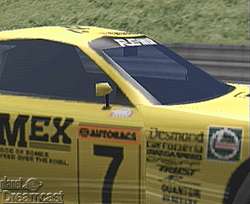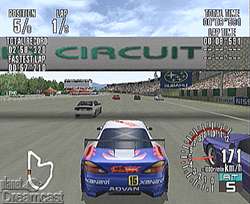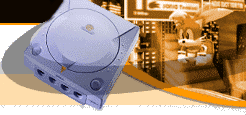| |
Sega GT
Sega's answer to Gran Turismo delivers - Review By Missionyrd
 For years PlayStation owners have been pleasantly wrapped up in the goodness that is the Gran Turismo series. Unmatched in racing options, featured cars, and driving physics, Gran Turismo was the title for console gamers looking for a realistic racing fix. After Gran Turismo 2, it appeared as though us gamers would have to wait until the release of Playstation 2 and Gran Turismo 3 for the next great racing title. However, things have changed, and racing fans have a new title to check out and enjoy: Sega GT on the Dreamcast.
For years PlayStation owners have been pleasantly wrapped up in the goodness that is the Gran Turismo series. Unmatched in racing options, featured cars, and driving physics, Gran Turismo was the title for console gamers looking for a realistic racing fix. After Gran Turismo 2, it appeared as though us gamers would have to wait until the release of Playstation 2 and Gran Turismo 3 for the next great racing title. However, things have changed, and racing fans have a new title to check out and enjoy: Sega GT on the Dreamcast.
The Good

The car detail is pretty "sweet", as the kids say. |
A number of different options are available in Sega GT, including a championship mode, single player race, time trial mode, and two-player split screen. While most of the time is actively spent in the Championship mode buying, tuning, and racing cars, the other modes of play are welcome additions. The Championship mode is quite detailed with license tests, official class races, event races, and special races which include an Endurance Race, a 0-400 and 0-1000, along with some speed and time tests.
Unique to the Championship mode is the car factory, in which players can create their own cars to compete with in races. Some races even go as far as to require an original car just to enter the race. A factory license must be earned to build cars of different engine sizes. In addition to being able to construct cars based off of a 2000cc or 4500cc engine, the ability to construct a car with a rotary-powered engine is also available. Want to enable your car to utilize a turbo or supercharger? You can do that as well as dictate engine placement, drive train, and body style.
Car customization is a very large part of Sega GT's gameplay. Knowing how to setup gear ratios to get the best top end speed or acceleration is essential to dominating in both the course-based races and the dragging events.

5 opponents, no slowdown. Of course, it is only running at 30fps. |
Deciding how far to turn up the turbo, camber and damper settings, loose or tight suspension, soft or hard tires, ride height, and brake settings all come into play in Sega GT, making it a true racing title for the car enthusiast. In many cases the suitable upgrades, such as bigger turbos or improved suspension, must first be purchased with credits earned from racing.
The controls in Sega GT are straightforward and make sense for a racing title. The standard setup has the right and left triggers acting as the accelerator and brake, allowing the additional buttons on the pad to be used for up and down shifting, changing the view, and the hand brake. This is the standard layout of the controls, but different variations are available through the options menu to better suit players who feel the need to be different.
The physics model in Sega GT is up to par compared to most other racers, and stacks up well to the giant, Gran Turismo. Car control feels accurate and the ability to "ride the wall" has been thrown out the window. While there is no damage system in Sega GT, riding the wall or hitting it will cause the player's car to decelerate substantially, and can often be the deciding factor in a race. While a damage system, or the option to turn on damage, would have been a nice touch, the increased impact of hitting a wall helps to reward "good drivers" versus those who push the accelerator to the floor the entire length of the track.
One area that Sega GT immediately stands out is the graphics department. With beautiful scenery, wonderfully detailed cars, a lovely sky filled with clouds, and special effects such as blurred lights and smoke, Sega GT looks to have a major leg up on just about every racing simulation title currently available for a console. The only major fault is that it runs at 30 frames per second instead of 60. This is understandible, considering the high level of detail, but just a bit disappointing nonetheless.
Next: More Good, The Bad, and The Final Word

|

